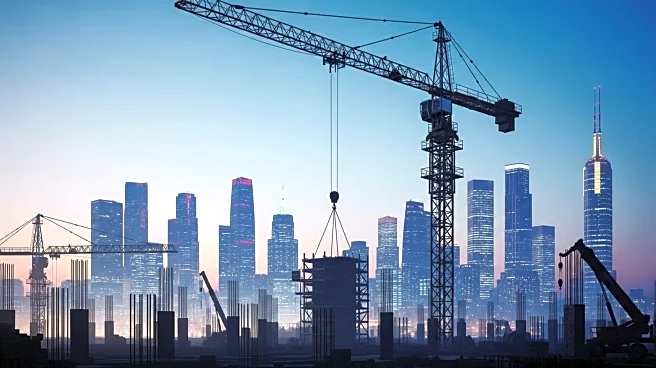What's Happening?
China has rapidly transformed its infrastructure landscape, building high-speed rail lines and nuclear plants, while the United States struggles to complete even basic subway extensions. This contrast is explored in Dan Wang's book 'Breakneck: China's Quest to Engineer the Future,' which examines China's focus on engineering and manufacturing expertise. The book suggests that China's approach to infrastructure development has been a key factor in its economic growth, while the U.S. faces challenges due to environmental concerns and lengthy project timelines.
Why It's Important?
The disparity in infrastructure development between China and the U.S. has significant implications for global economic competition and technological advancement. China's ability to quickly execute large-scale projects enhances its economic position and influence, potentially outpacing the U.S. in key areas such as transportation and energy. This situation raises questions about the U.S.'s ability to compete in the global market and maintain its leadership in innovation. The focus on engineering in China contrasts with the U.S.'s legal and regulatory hurdles, which may hinder progress and economic growth.
What's Next?
The U.S. may need to reevaluate its approach to infrastructure development, considering strategies to streamline project approval processes and reduce environmental impact concerns. Policymakers and industry leaders could explore adopting elements of China's engineering-focused model to enhance efficiency and competitiveness. This shift might involve increased investment in technology and manufacturing capabilities, as well as fostering a culture that values rapid development and innovation.
Beyond the Headlines
The cultural and societal differences between the U.S. and China play a role in their respective approaches to infrastructure. China's centralized government allows for swift decision-making and execution, while the U.S.'s democratic processes can lead to delays and opposition. Understanding these dynamics is crucial for addressing the underlying challenges in U.S. infrastructure development and finding solutions that balance environmental concerns with economic growth.












